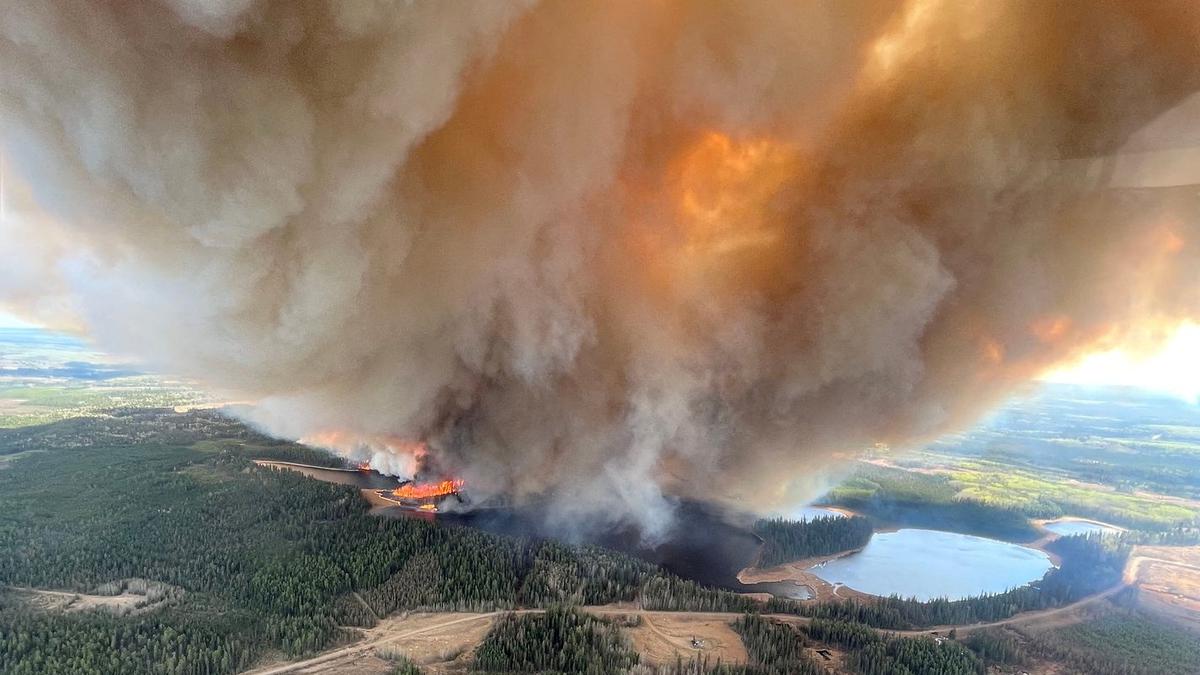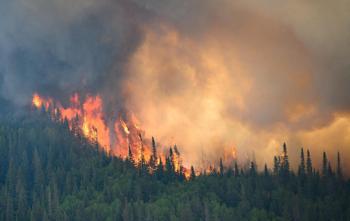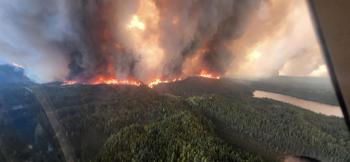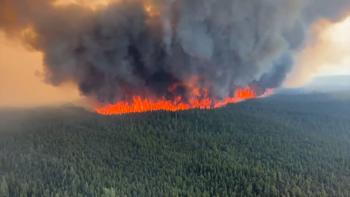Wildfires Rage Across Canada Forcing Historic Evacuations as Smoke Blankets US Cities
A Nation on Fire
Canada Battles One of the Worst Early Fire Seasons in History
Canada is experiencing one of its most intense wildfire emergencies in recent memory, with massive blazes tearing through the western and central parts of the country. Thousands of residents have been forced to flee their homes as rapidly spreading fires engulf forests and communities. The severity of the fires has prompted emergency declarations in multiple provinces, and smoke from the infernos is now drifting into the United States, impacting air quality in several major cities.
This fire season is not just alarming due to its scale — it's also unusually early. Canada has already raised its National Preparedness Level to the maximum level of 5, something that typically doesn't happen until mid-summer.
Evacuations on a Historic Scale
Tens of Thousands Forced to Leave Homes in Manitoba and Saskatchewan
In Manitoba, approximately 17,000 people have been ordered to evacuate. The affected areas include Flin Flon, Pimicikamak Cree Nation, Cross Lake, and Mathias Colomb Cree Nation. Officials have stated this is the largest evacuation in living memory for the province. The state of emergency is set to last at least a month, with potential extensions based on how the situation evolves.
A particularly critical situation has unfolded in the community of Pukatawagan, where around 2,000 residents found themselves stranded after heavy smoke shut down the local airport. Among them were children and elders who were anxiously awaiting evacuation support.
In neighboring Saskatchewan, similar conditions have forced thousands to flee. The provincial government has also declared a 30-day state of emergency. Authorities there are urgently calling for rainfall to help combat the fires, which are escalating under extremely dry and hot conditions.
Wildfires Fueled by Climate Extremes
Heat and Drought Creating a Perfect Storm
This wildfire crisis is being intensified by unseasonably high temperatures and persistent drought conditions. Some regions have experienced temperatures 15 to 20 degrees Fahrenheit above average. These conditions, coupled with dry vegetation, create the perfect fuel for fast-moving fires.
According to experts, climate change is playing a major role in the increased frequency, size, and intensity of these wildfires. The risk days for wildfires are growing, and fire behavior is becoming more extreme and unpredictable.
Last year, Canada suffered its worst wildfire season on record, with over 45 million acres burned. This year is already off to a dire start, with more than 1.58 million acres burned — about 40% more than the 10-year average for this time of year.
A Closer Look at the Damage
Provinces Bear the Brunt of Destruction
Saskatchewan and Manitoba are bearing the brunt of the devastation. Nearly 90% of the acreage burned so far this year has occurred in these two provinces. In just two days, Saskatchewan lost about 250,000 acres, while Manitoba saw 430,000 acres burned since Sunday — an area roughly double the size of New York City.
Fires have also flared up in British Columbia and Alberta. In Alberta’s northern region near Chipewyan Lake, eight firefighters were trapped temporarily by rapidly shifting flames and intense heat. Although they were eventually rescued, the incident underscores the perilous conditions on the front lines.
Smoke Creeping into the United States
Air Quality Alerts Issued Across the Midwest
Smoke from the Canadian wildfires has drifted southward, darkening skies and triggering air quality alerts across the Upper Midwest of the United States. By Thursday, smoke plumes covered more than 500,000 square miles — twice the size of Texas.
Major cities including Chicago, Milwaukee, Green Bay, and Detroit are expected to experience reduced visibility and deteriorating air quality through the weekend. In Minnesota, officials issued an alert for the northern half of the state, warning that fine particle pollution had reached levels considered unhealthy for the general population. Similar alerts were issued for parts of Michigan and Wisconsin.
Minnesota’s Arrowhead region recorded the poorest air quality in the United States Friday morning due to smoke from the fires.
While higher-altitude smoke may not pose a direct threat to air quality, it can alter atmospheric visuals, leading to unusually vivid sunrises and sunsets. However, lingering mid-level smoke could continue to pose health risks for millions.
What Lies Ahead
More Fires and Smoky Days Expected This Summer
Unfortunately, the outlook for the coming months remains grim. Canada's seasonal wildfire forecast predicts well above-average fire activity throughout the summer. Much of the western United States is also expected to experience above-normal wildfire potential by July.
Communities across North America are being urged to stay vigilant and prepare for more smoky days, hazardous air quality, and potentially more evacuations. With climate change making extreme weather events and natural disasters more frequent and severe, the 2024 wildfire season is shaping up to be a stark reminder of the new normal.



